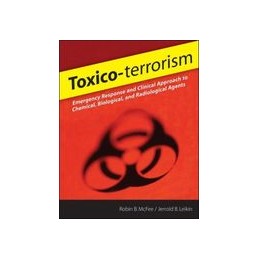- Reduced price

Order to parcel locker

easy pay


 Delivery policy
Delivery policy
Choose Paczkomat Inpost, Orlen Paczka, DHL, DPD or Poczta Polska. Click for more details
 Security policy
Security policy
Pay with a quick bank transfer, payment card or cash on delivery. Click for more details
 Return policy
Return policy
If you are a consumer, you can return the goods within 14 days. Click for more details
Publishers Note:: Products purchased from Third Party sellers are not guaranteed by the publisher for quality, authenticity, or access to any online entitlements included with the product.
The emergency medicine expertise you need to prepare for--and manage--any type of bioterrorist attack!
Written by emergency room physicians for emergency room physicians, Toxico-terrorism covers every essential aspect of the emergency medical response to microbial, radiological, and chemical agents of terrorism. Turn to any page, and youll find lifesaving clinical strategies for the management of patients who have been exposed to a biologic, chemical, or nuclear agent.
Features
Data sheet
